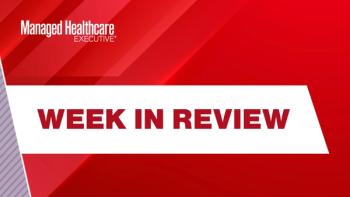
Top 3 strategies employers should use to decrease healthcare costs
A new Willis Towers Watson survey finds that U.S. employers have three key strategies to building cost-effective healthcare programs.
Employers are following a strategy of taking many concurrent steps to manage costs, according to the results of a
The Willis Towers Watson 2017 Emerging Trends in Health Care Survey was fielded in January 2017 to determine how U.S. employers with at least 200 employees use and deliver health care programs and services. The 666 employers that responded represent 9.3 million employees, including 6.5 million full-time employees, across a variety of industries.
Julie Stone, a national healthcare practice leader at Willis Towers Watson, likens the challenges employers face to “playing the carnival game, whack-a-mole. No sooner is one challenge under control than a new one pops up.”
“While it would be nice to have a magic bullet answer to the challenge of managing healthcare costs, U.S. employers recognize that no single change will radically transform the cost structure of healthcare programs,” adds Stone.
As challenging as juggling a lot of things at once can be, employers have been successful at lowering cost increases over time. From a high of 14.7% in 2002, the expected healthcare cost increase for 2017 is 5.0% after plan changes and 6.0% without.
According to Stone, the top three solutions employers will use over the next three years include:
1. Increasing employee point-of-care-costs by adjusting deductibles, out-of-pocket maximums, and out-of-network co-insurance.
“More employers are offering high-deductible health plans or, in some cases, exclusively high-deductible health plans, often associated with health savings accounts,” Stone says. In addition, employers are concentrating on increasing out-of-pocket maximums for employees and decreasing out-of-network coinsurance.
2. Modifying vendor strategies by expanding wellness programs and/or changing vendor partners.
Says Stone: “Examples include allowing employees not in the medical plan to take advantage of wellness programs offered by carriers; shifting to narrow networks; changing providers for prescription drugs and/or supplemental benefits such as vision plans; and transitioning retirees from group plans to the individual Medicare market.”
3. Adding new provisions to prescription drug plans to encourage appropriate utilization.
“Employers are adding incentives or restrictions to pharmacy plans to encourage the use of generics and mandate 90-day prescriptions for maintenance drugs,” Stone says.
They also are changing generic drugs from copay to coinsurance, as well as putting in place specialty drug management programs will also help keep the drug trend down.
Actions employers are taking to improve the employee experience of their healthcare programs, include:
• Implementing high-tech processes for health plan enrollment such as interactive online interfaces with decision support, including recommendation engines to help employees choose plans that are best suited to their health situation and needs.
According to the survey, 40% of respondents have done so; another 35% are planning to or considering it.
• Providing employees with greater choice in health plan options and types of benefits, for example, adding voluntary benefits such as critical illness, identify theft and others.
Thirty-eight percent of survey respondents do so; another 26% are planning to or considering it.
• Improving navigation of healthcare providers to make it easier for employees to understand their benefits and explanations of benefits.
According to the survey, 30% have done so; another 36% are planning to or considering it.
According to Stone, employers that are most successful at managing costs are:
1. Embracing high-deductible health plans with health savings accounts.
2. Aggressively managing pharmacy spend by evaluating the pharmacy contract terms, adding a narrow retail network, and adopting new coverage or utilization restrictions for specialty pharmacy.
3. Providing employees with more choice, supported by advanced decision support.
Newsletter
Get the latest industry news, event updates, and more from Managed healthcare Executive.






















































